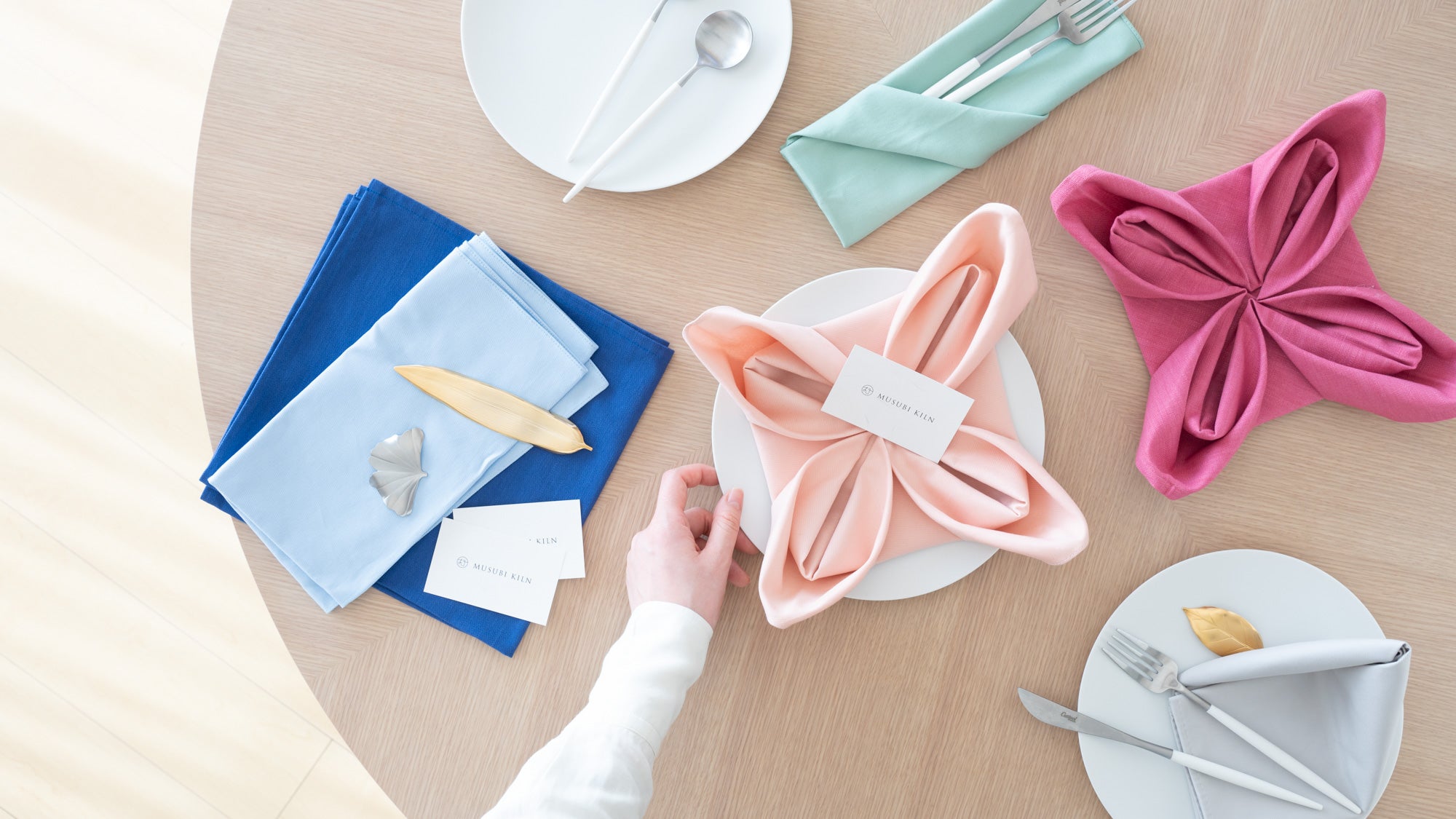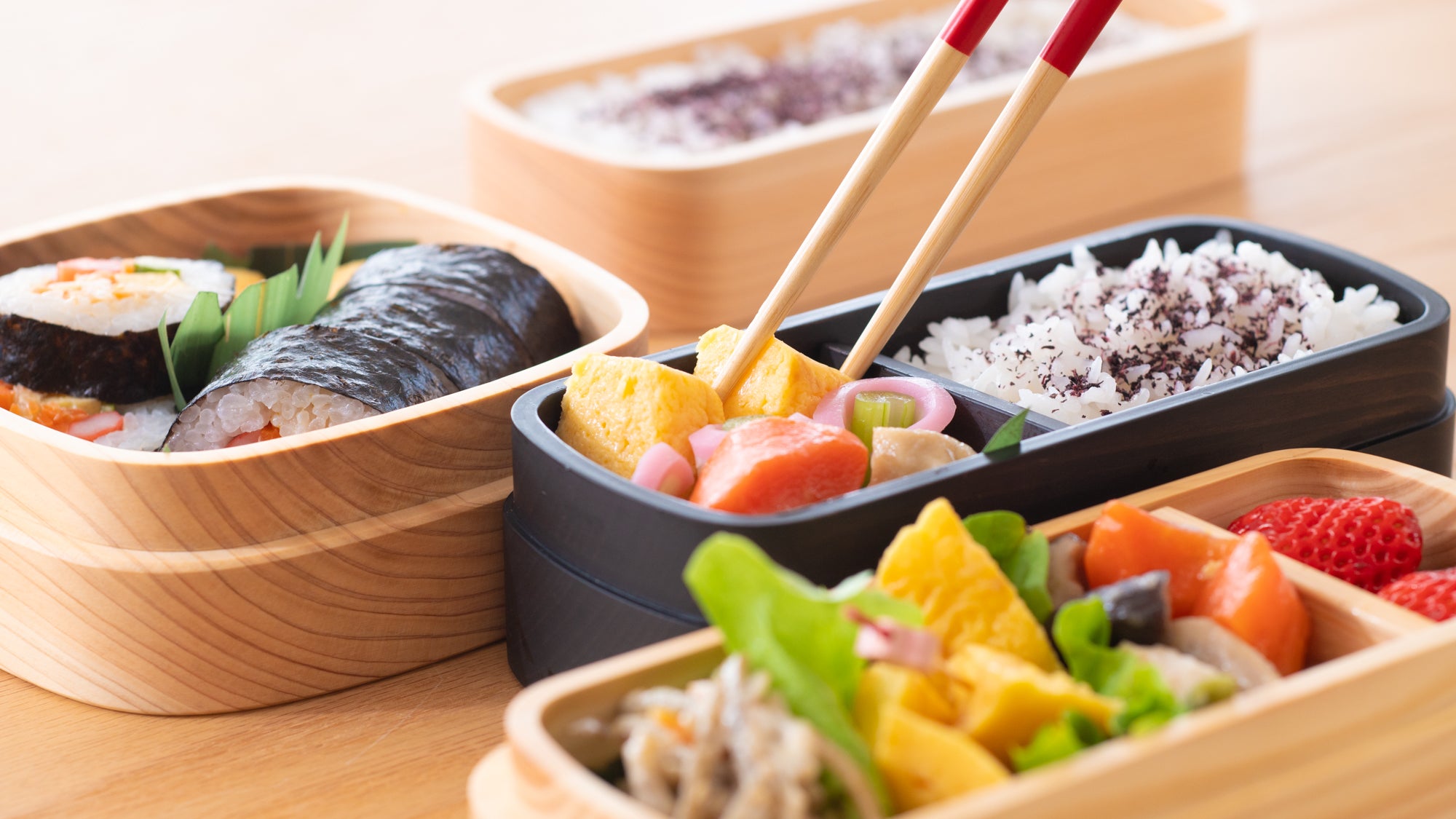16 March 2022
Updated on 29 March 2022
Guide for Japanese Flatware & Cutlery

Cutlery is the utensil we most often come into contact with at mealtime. In Japanese cuisine, chopsticks have been used as the main cutlery since ancient times, and a spoon was used as an auxiliary role, such as for eating soup, and as for forks, they were used for eating sweets. This section describes the types and characteristics of various Japanese cutlery, especially about chopsticks made in Japan.
Contents
- Japanese Chopsticks
- Chopstick Rest
- Spoon
- Fork
Japanese Chopsticks
In Japanese, chopsticks are called "Hashi".
The Japanese word "Hashi" has other homonyms meaning "edge" and "bridge," and some believe that they are the origin of the word "chopsticks," so called because the edge of the stick is used to pick up things, or to bridge the gap between food and a person.

Type of Japanese Chopsticks
Japanese chopsticks are made of bamboo, wood, or Japanese lacquerware, and have a tapered shape. Each person has their own set of chopsticks, and generally do not share them with others.
Chopsticks are not only for personal use, but also come in a variety of sizes and uses, such as long chopsticks for cooking and larger chopsticks for serving meals and sweets.

What is the best length of chopsticks for you?
Optimal length Japanese chopsticks are easy to hold and use, make you look beautiful when eating. Try to measure the perfect length of chopsticks according to your hand size.

For Adults
For adults, the optimal chopstick length for you is 1.5 times the distance between the tip of your thumb and the tip of your index finger when you spread your thumbs at right angles.
In general, it is recommended that individuals of average or small height should choose the middle size chopsticks with a length of 8.3-9 inches (21-23 cm), and taller individuals should choose the large size chopsticks with a length of 9-9.8 inches (23-25 cm).
However, regardless of your height or physique, the size of your hands varies from person to person, so we recommend you to measure your hands as shown in the image, calculate the optimal length, and then choose chopsticks of a size close to that length.

For Children
For children, the optimal length of chopsticks is the length of the hand plus 3cm.
By giving your child the best size chopsticks, they can continue to enjoy practicing using them.
Note that children vary greatly in size from person to person, but the following is a general guide.
| Size Guide | |
|---|---|
| 3 to 4 years old | 15-16cm (5.9-6.2in) |
| 5 to 9 years old | 17-18cm (6.7-7.1in) |
| 10 to 15 years old | 19-20cm (7.5-7.9in) |
| Adult female, Teenager | 21-23cm (8.3-9in) |
| Adult male, female | 23-25cm (9-9.8in) |
How to hold chopsticks
Holding chopsticks correctly not only makes mealtime more comfortable, it also makes your hand look and feel beautiful.
In Japan, people are trained in table manners using small chopsticks from childhood. It may be difficult for first-time users as adults, but you will gradually get used to it with repeated use. First, let's look at the basics of using chopsticks.

1Try holding one of the two chopsticks first. Hold it by pinching about two-thirds of the way from the chopstick tip with your thumb and index finger, as you would when holding a pen.

2Next, put the other chopstick through the circle between your thumb and index finger, and hold it between your middle and ring fingers. Keep the tips of the upper and lower chopsticks close together.

3When picking up food, move the upper chopsticks with your index finger, middle finger and thumb. The lower chopsticks are not moved, held up by the base of the thumb and on the ring finger.
Chopsticks that support beautiful holding
While there were many practice chopsticks in the past that taught the correct way to hold chopsticks, these were not the best design for table setting. Recently, items have been introduced that support the beautiful way of holding the chopsticks while maintaining a beautiful, traditional Japanese chopsticks designs.
Bamboo chopsticks for a daily use
If you are used to using chopsticks, try using bamboo chopsticks, which are traditional Japanese chopsticks.
The narrow tip supports various movements, such as picking, stirring, and removing bones. In addition, bamboo can maintain its strength even in a thin shape, so delicate and beautiful chopsticks will make your dining table more elegant.

Japanese lacquerware chopsticks for a more luxurious look
Japanese lacquerware is a traditional craft that combines elegant luster and deep colors with lightness and durability, making it the finest quality cutlery available.
Combined with very aesthetic decorations such as Maki-e (gold-relief lacquer) and Raden ( mother-of-pearl inlays ), Japanese lacquerware chopsticks are surely a great gift.
Although most Japanese lacquerware, a highly prestigious traditional craft, cannot be used in microwave ovens or dishwashers, it is recommended for everyday dining, as its color and luster deepen with each use. Synthetic lacquerware chopsticks are more user-friendly, and their beauty is second to real lacquerware.
Standard Size
The typical length of a chopsticks are around 23-25 cm (9-9.8 in).
Chopstick Rest

A chopstick rest is a small piece of art on the table. Since they are placed at the very front of the table, they are always seen by the guests.
Not only will they make your table setting more beautiful, but they will also stimulate pleasant conversation! It is very useful to have several to match the table theme or the season.
Or, a collection of beautiful, cute chopstick rests made of various materials and stored neatly in a beautiful box will fill your heart just as if you were collecting treasures.
Where to place the Chopstick Rest?
In Japanese manner, chopsticks are placed parallel to the table, so chopstick rests are basically placed on the left side in front of the table so that the tips of the chopsticks rest on them.
- If the guest is right-handed, place them on the left side.
- If the guest is left-handed, place them on the right side.
Of course, you may not know the handedness of each guest. In that case, it is common to place it on the left side.
Benefit of using Chopstick rest
The most obvious benefit of using chopstick rests is the hygiene aspect. The chopstick rest prevents the mouth part of the chopsticks from touching the table or tray.
In this way, chopsticks are not placed directly on the table or tray, keeping both hygienic and aesthetically pleasing. A chopstick rest is a very useful tool in situations where chopsticks need to be placed in a couple of times, such as when using other cutlery in combination with chopsticks.
Using chopstick rests can also make your table setting more joyful. Moreover, by choosing the best chopstick rests from a variety of designs, it is possible to create a sophisticated atmosphere.
Standard Size
The typical lengh of a chopstick rest is around 6 cm (2.4in).
As an example of application, a sauce plate may be used in place of a chopstick rest.
Spoon
The Japanese word for spoon is "Saji," and by the 6th~7th century, a style of eating that used both chopsticks and a spoon had become common. In olden times, ceramic spoons were the standard, and were called "Renge" (Lotus) because of their resemblance to the shape of a lotus flower.
In modern times, metal spoons are often used in Japan, but wooden, ceramic, Japanese lacquerware, or bamboo spoons are more appropriate for more traditional styles.
Ramen Spoon
The ramen spoon is an old "Renge" style ceramic spoon, slightly larger and deeper than a typical spoon, and shaped for scooping soup.
Those with saucers can also be used to serve bite-sized desserts and appetizers.
Dessert Spoon
Wooden dessert spoons are perfect for eating hot foods such as Chawanmushi (steamed egg custard) and rice porridge because they do not conduct heat.
In addition, lacquered ones are especially good to the palate and go well with beautifully arranged Japanese sweets.
Standard Size
Ramen Spoon: about 19cm(5.9in) x 4cm(3.7in)
Dessert Spoon: about 14cm(5.7in) x 3cm(1.1in)
Fork
In Japan, Western forks came into use in the 19th century, but there were similar utensils. These small cutlery were mainly used for eating Japanese sweets and were usually made of bamboo, wood, or Japanese lacquerware.
Many Japanese sweets have soft textures, such as Mochi rice cakes and Yokan(Azuki bean jelly), and the gentle atmosphere and mouth feel of a Japanese dessert fork goes well with them. In particular, those made with “Kabazaiku (cherry bark craft)”, a traditional Akita Prefecture craft, are very popular.
Standard Size
The typical length of a Japanese dessert fork is around 12 cm (4.8in).

























